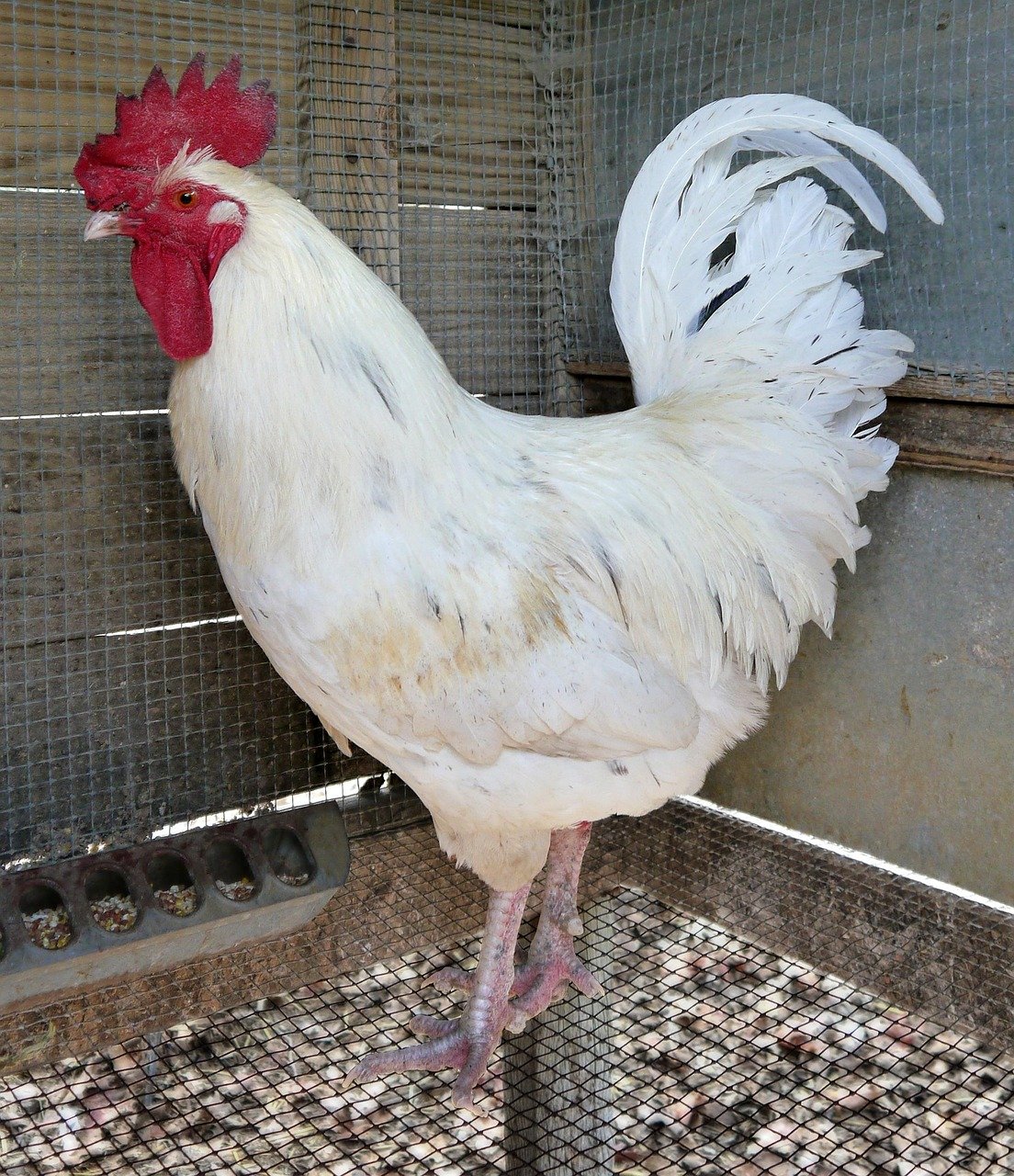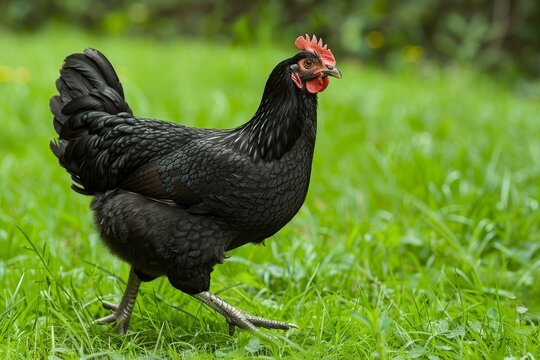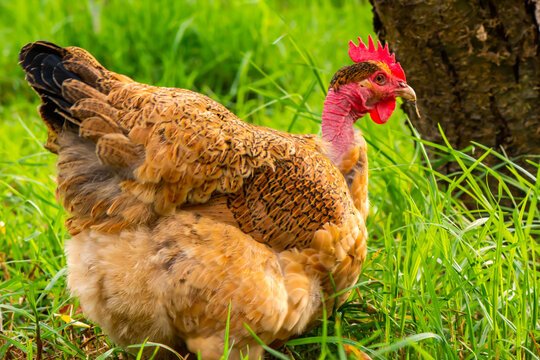Best Chicken Breeds for Arizona’s Climate
As we step into the new year, it’s the perfect time to start planning for your backyard flock. Whether you're a seasoned chicken keeper ready to expand your flock or a newcomer who’s heard that spring is the best time to get chicks, one of the first decisions you’ll face is: What breeds should I choose?
Arizona’s climate is unique—hot, dry summers and mild winters create specific challenges and opportunities for raising chickens. Choosing breeds that can thrive in these conditions is key to keeping your flock happy, healthy, and productive. Let’s take a deep dive into Arizona’s climate and explore the best chicken breeds to consider.
Understanding Arizona’s Climate
Arizona’s climate is characterized by extreme heat in the summer months, particularly in the southern regions like Phoenix and Tucson, where temperatures regularly exceed 100°F. Chickens are resilient animals, but not all breeds can handle this level of heat.
What should you look for in a breed suited to Arizona?
Heat Tolerance: Chickens with small or single combs (which help dissipate heat) tend to do better in hot climates.
Good Foragers: Chickens that enjoy foraging can thrive even in sparse environments and may help manage pests in your yard.
Feather Type: Breeds with lighter or less dense feathering stay cooler than those with heavy plumage.
Top Chicken Breeds for Arizona’s Heat (with Difficulty Levels)
Not all chickens are created equal when it comes to care and management. To help you make the best choice, we’ve included a difficulty level for each breed, ranging from Easy (great for beginners) to Moderate (better for experienced chicken keepers).
Leghorns
Why They’re Great: Leghorns are lightweight with single combs, making them excellent in the heat. They’re prolific layers of large white eggs and thrive in warm, dry climates.
Personality: Active and independent. They’re not particularly cuddly but are very efficient layers.
Egg Production: 280–320 eggs per year.
Difficulty Level: Moderate – Leghorns are high-energy birds and may require extra space and stimulation. They are not the friendliest breed, which can be challenging for families with small children.
2. Easter Eggers
Why They’re Great: Known for their colorful eggs (blue, green, pink), Easter Eggers are adaptable to various climates and have lighter feathering, making them heat-tolerant.
Personality: Friendly and docile, making them perfect for families and beginners. They get along well with other breeds.
Egg Production: 200–280 eggs per year.
Difficulty Level: Easy – Easter Eggers are low-maintenance and great for first-time chicken keepers. Their friendly nature makes them a joy to have in the flock.
3. Welsummers
Why They’re Great: Welsummers lay beautiful dark brown eggs and are excellent foragers. They adapt well to free-ranging setups, which can be especially useful for pest control.
Personality: Independent but calm. They enjoy roaming but are not flighty or aggressive.
Egg Production: 200–250 eggs per year.
Difficulty Level: Easy to Moderate – Welsummers do well in free-range environments but may require more space than breeds suited to confinement.
4. Ancona
Why They’re Great: These heat-tolerant birds are energetic and excellent foragers. Their small combs make them well-suited for Arizona’s hot weather.
Personality: Active and adventurous. They love to roam and need plenty of space.
Egg Production: 220–280 eggs per year.
Difficulty Level: Moderate – Anconas are active birds that can be a bit skittish. They’re not the best choice for small yards or beginner chicken keepers who prefer hands-on interaction.
5. Black Australorp
Why They’re Great: Black Australorps are dual-purpose birds known for their egg production and adaptability. Despite their heavier feathering, they handle heat surprisingly well with proper shade and water.
Personality: Friendly and docile, making them great for families and beginners. They also get along well in mixed flocks.
Egg Production: 250–300 eggs per year.
Difficulty Level: Easy – Australorps are low-maintenance and ideal for first-timers. Their calm demeanor makes them a pleasure to keep.
6. Naked Necks (Turkens)
Why They’re Great: With their unique “naked necks” and reduced feathering, Turkens are naturally suited to hot climates. They are hardy birds that can handle both heat and cold.
Personality: Curious and adaptable, they are easygoing and great for free-range or confined setups.
Egg Production: 200–250 eggs per year.
Difficulty Level: Easy – Turkens are robust, low-maintenance birds that thrive in various setups. Their quirky look also makes them a fun addition to your flock.
7. Plymouth Rocks
Why They’re Great: Dual-purpose birds with good heat tolerance, Plymouth Rocks are an all-around favorite for families and beginners.
Personality: Friendly, social, and inquisitive. They’re great with children and love to interact with their keepers.
Egg Production: 200–280 eggs per year.
Difficulty Level: Easy – Plymouth Rocks are low-maintenance, hardy, and great for all levels of chicken keepers.
Choosing the Right Breed for You
For beginners, breeds like Easter Eggers, Black Australorps, Naked Necks, and Plymouth Rocks are fantastic starting points. They’re easy to care for, friendly, and adaptable to both heat and your learning curve.
If you have more experience or enjoy more active breeds, Leghorns, Welsummers, and Anconas can be rewarding choices, especially if you have a spacious yard and don’t mind their more independent natures.
No matter what you choose, Arizona's heat-tolerant breeds can provide you with fresh eggs and a fun, rewarding hobby year-round!
Tips for Raising Chickens in Arizona’s Heat
Even with heat-tolerant breeds, managing Arizona’s summer heat requires extra care:
Provide Shade: Ensure there is plenty of shade in the run. Trees, tarps, or canvas covers are great options.
Cool Water Access: Keep waterers full and cool. Use frozen water bottles to keep drinking water refreshing throughout the day.
Use Cooling Tools: Set up shallow pools with water and clay bricks for chickens to cool their feet. Consider fans or misters (used sparingly) for additional airflow.
Feed Wisely: Offer cool treats like watermelon or cucumber to keep chickens hydrated.
Ventilate the Coop: Ensure your coop has excellent ventilation to prevent overheating, and consider adding solar-powered exhaust fans.
Planning for Spring: Expanding Your Flock
Spring is the best time to add chicks to your flock. Once you've chosen your breeds, prepare a brooder with all the essentials to ensure a smooth start:
Heat lamp
Bedding (pine shavings work well)
Chick-sized feeders and waterers
Keep in mind that chicks are more sensitive to extreme temperatures, so careful monitoring is necessary until they’re fully feathered.
Conclusion: Build Your Arizona-Ready Flock
Arizona’s climate offers unique challenges, but with the right breeds and proper care, your chickens can thrive year-round. Whether you’re looking for colorful eggs, friendly personalities, or hardy foragers, there’s a perfect breed (or mix of breeds!) for your backyard.
What are your favorite breeds for Arizona’s heat? Share your experiences with us in our new Facebook Group, and don’t forget to follow Tidy Coops on social media for more tips, tricks, and updates!
Happy New Year, and happy chicken keeping!







